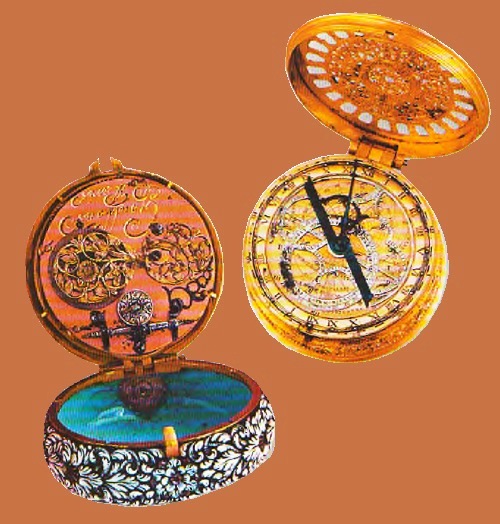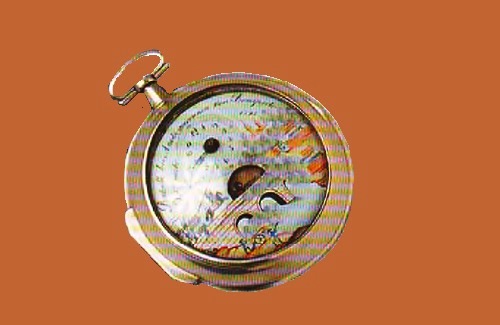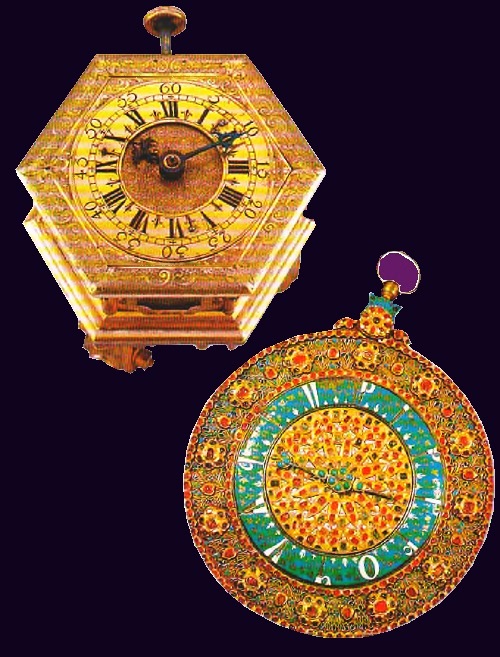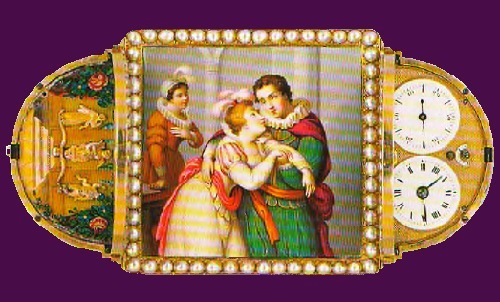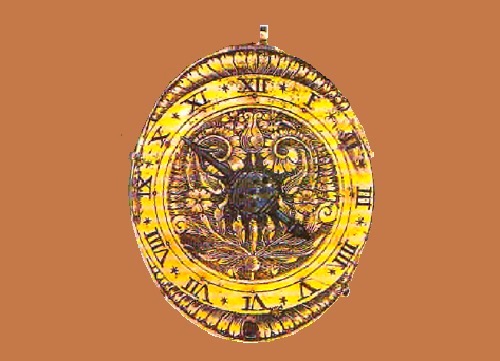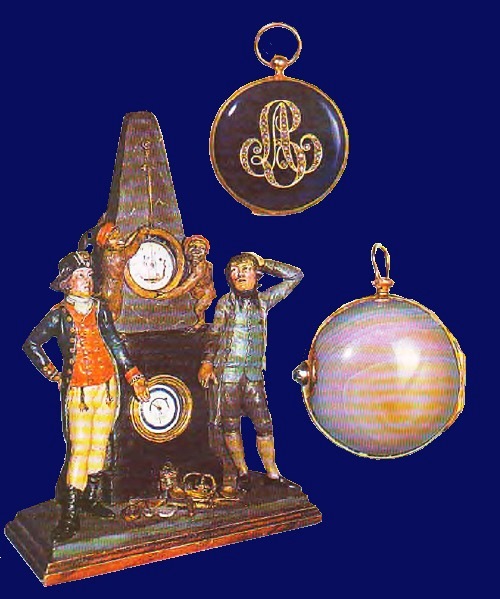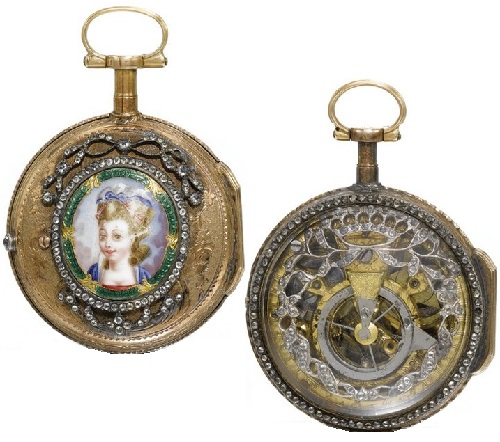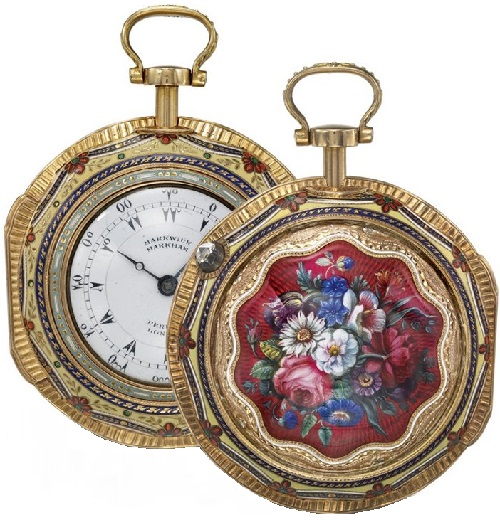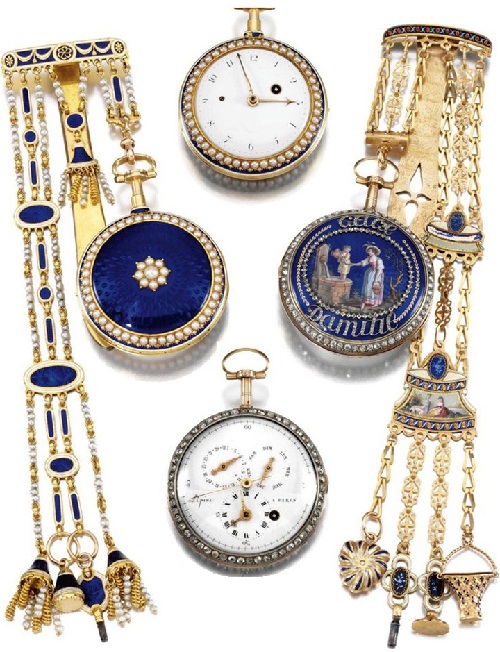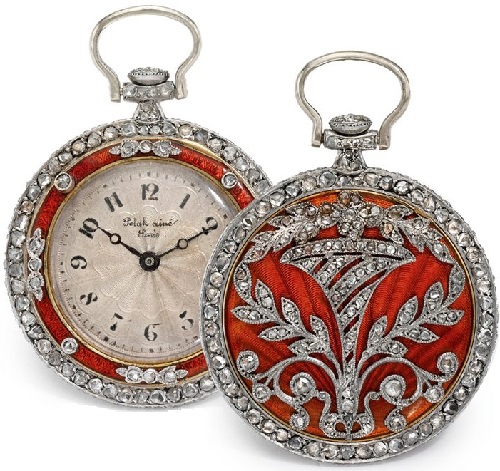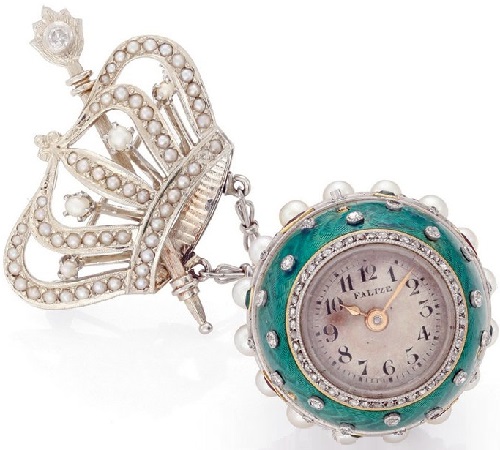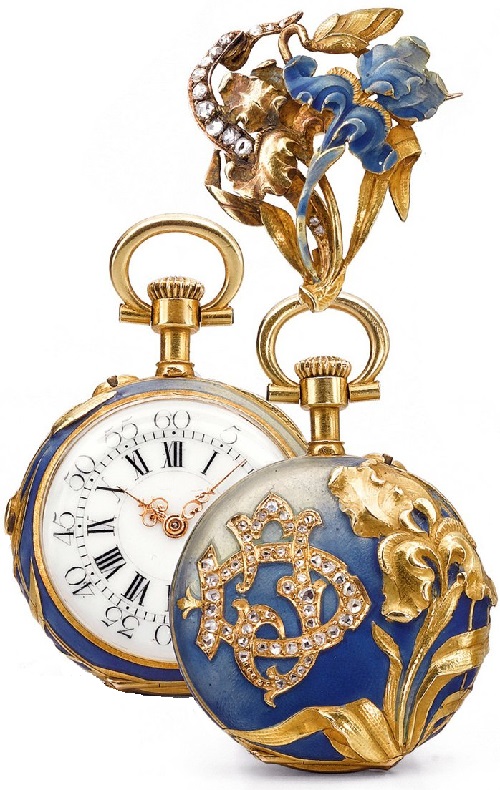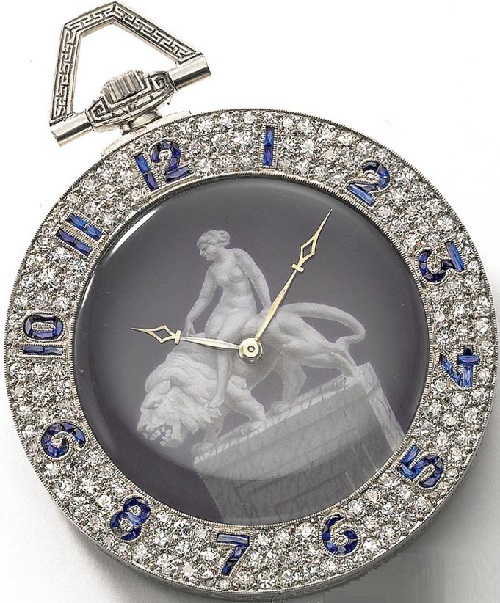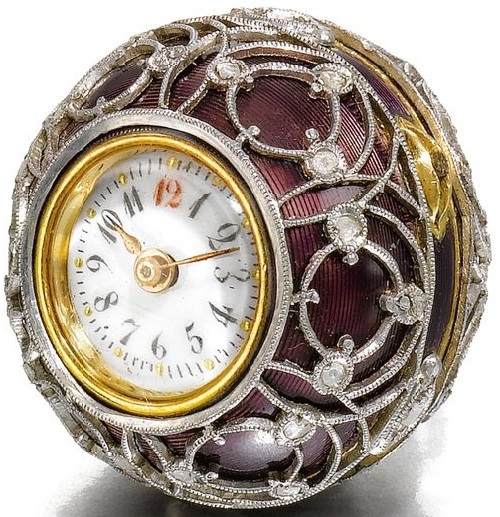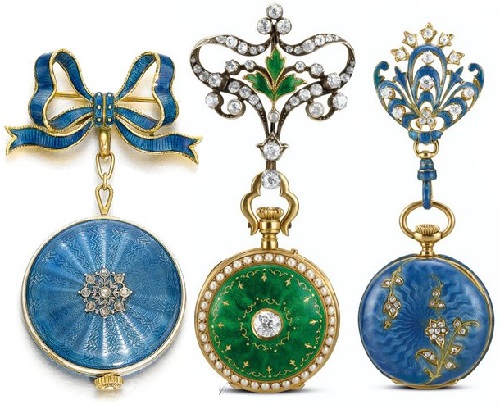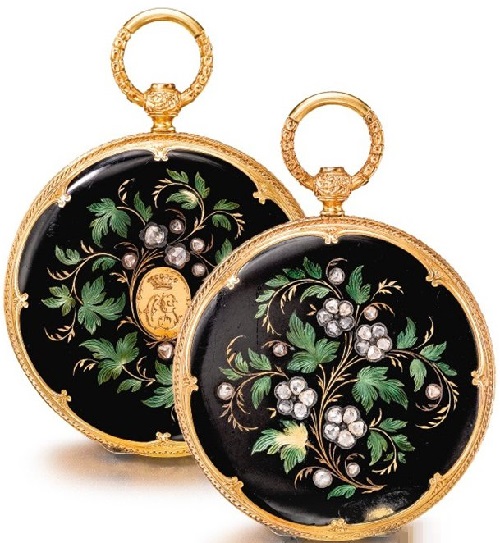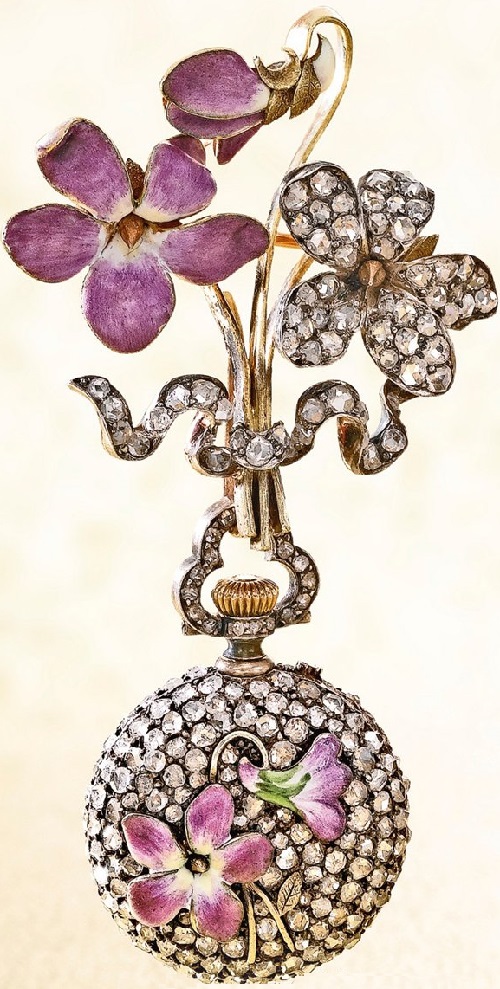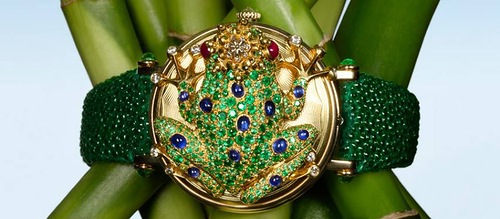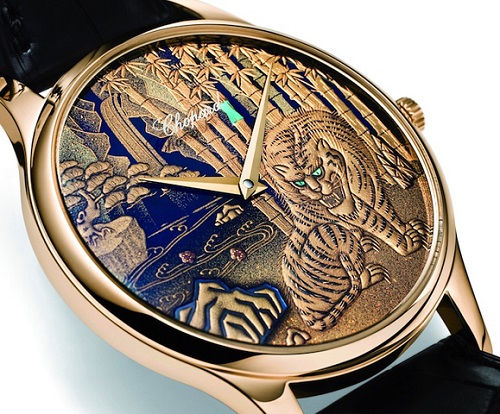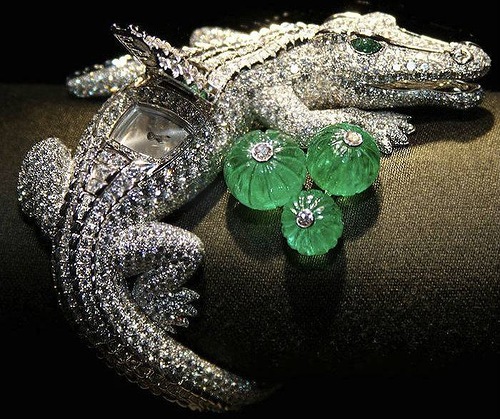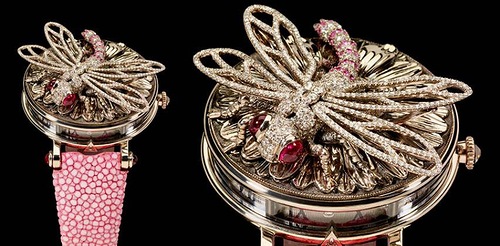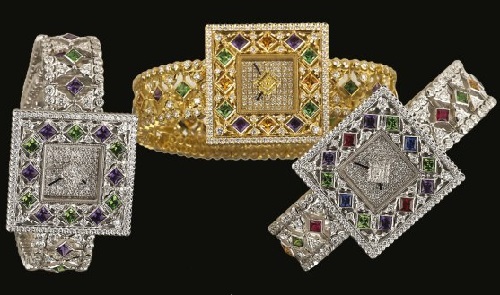From Watches to jewellery
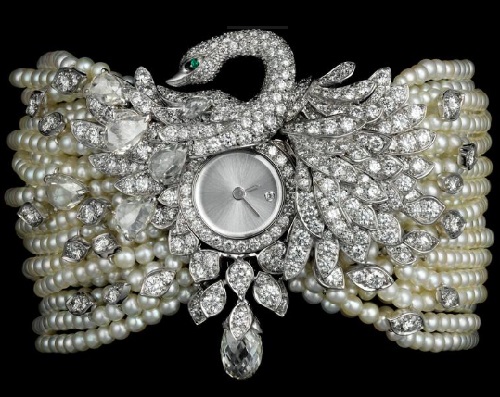
Swan. L’Heure Envoutée de Cartier collection. Rhodium-plated 18-carat white gold, pear-shaped and briolette-cut diamonds, emerald eye. Quartz movement. From Watches to jewellery
From Watches to jewellery
In 1557, the Swedish king Gustav I brought to Ivan the Terrible gilded cup with the clock in the lid. Fedor, his son and heir came to the delight of the astronomical clock with calendar – Gift of Holy Roman Emperor Rudolf II. Later, from Vienna arrived two musical automaton with moving figures chiming hours. Having become a prestigious thing and the object of admiration, they cost extremely expensive. To afford such luxury could only elite circle. In creating pocket watch took part representatives of various jewelry specialties. The materials chosen for the corps – gold, silver, bronze, precious and semiprecious stones, with the whole arsenal of methods and techniques of jewelry. Dandies wore several watches at a time, at least – made in gold and silver.
It is unlikely that in the late Middle Ages and early modern times were other industries where would be applied so much talent, knowledge and wit. With the creation of mechanical clocks began a new era of timekeeping. The design and decoration – the result of numerous experiments of engineers and artists of the Eurasian world, whose names are largely unknown. Nevertheless, the researchers call the cradle of mechanical watch Western countries, and the earliest clock – the English made for the implementation of Westminster Abbey in 1288. Four years later appeared the clock on the tower of the Cathedral of Canterbury, and in 1300 the ringing time bells were heard by the residents of Florence. In the 30-ies of the XIV century, Milan had got its tower clock. Sophisticated astronomical clock indicating the phases of the moon and some planets movement assembled in Padua in 1344, a little later – in the Belgian Brugge and English Dover, and in 1352 they decorated the Cathedral of Strasbourg.
During the second half of XIV – early XV century, German cities of Nuremberg and Augsburg, the French Paris and Aion, the free trade area of Luebeck and Danzig, as well as London became the owners of beautiful clock tower-houses. In 1404 the Grand Duke Vasily I installed liked clock in the Moscow Kremlin, and close to the Grand Palace, behind the home church of the Annunciation. The documents contain no description of the device, but reported that the mechanical human figure beat time with the bell and the score went to different time duration daytime and nighttime. Saved the name of the master, Aazar – Serbian monk of Athos monastery. At the end of the XVI century three Kremlin towers were equipped with the clock.
A huge contribution to the development of mechanical watches made a Nuremberg master Peter Henlein. His miniature spring watch dated about 1510. Two years later was published a tutorial on the clock, and about the young master who “built devices that surprise the most talented mathematicians …”. Now the clock can be carried in a pocket, hung to the belt or on a chain around neck. Works made by master personally are unknown and didn’t preserve. The first portable clock on the spring course was able to move freely in the interior, to place on tables and chests, as well as make an attractive accessory.
The emphasis was made on the plastic solution and decorating the body. The materials chosen for the corps – gold, silver, bronze, precious and semiprecious stones, made with the whole arsenal of methods and techniques of jewelry. The happy owner of an expensive toy could demonstrate exquisite openwork patterns, thoroughness of finishing and complexity of the descent or wheel transmission, fine engraving, graceful form struts connecting the dial and platinum (blank plate on the back side of the watch).
Having become a prestigious thing and the object of admiration, they cost extremely expensive, afford such luxury could only elite circle – the secular and the spiritual aristocracy, rich merchants. It is therefore natural that the forms and decorations of watches have always followed the great style of the era. The first pocket watch was called “Nuremberg eggs”, although they are not more like an egg, but a round snuffbox. Fairly large by the size, clock reminded voluminous suspension and looked impressive against the backdrop of bright, colored, shining gold thread of heavy brocade, velvet or satin, harmoniously matched men’s and ladies’ costume and jewelry set.
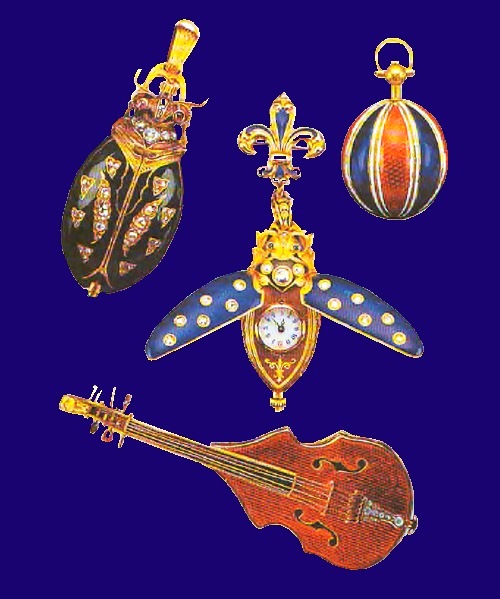
Watch in Jewelry. A variety of forms has no borders – musical instruments, figurines and insects, and a lovely shape Gizmos
Exhibition of watches. XIV century. Shown Dominican writer Heinrich Suso and Mrs. Wisdom. Watch (left to right) with an astrolabe; a clock that chimes every hour using a rope running from the ceiling; large mechanical clock with five bells; less desktop clock. France. Around 1334 In the Middle Ages the only area where have made impressive progress has been production of watch movements.
Watch ‘Tank Francaise’, continuing the tradition of the legendary classic models of the family ‘Tank’. The company ‘Cartier’ released the first model ‘Tank Etanche’ in 1931, it became the first waterproof sealed model. Today, as 80 years ago, in a golden watch case.
In the XVI century, during the Renaissance, in all the advanced countries of Europe appeared center of watchmaking, such as Florence and Venice in Italy, Blois, Paris and Rouen in France, Nuremberg and Augsburg in Germany, London in England, Antwerp in the Netherlands. The best in Europe and Russia at the time were considered the German clocks. Like everywhere else in the world, they were owned by only wealthy people, watches and clocks were a source of pride in the royal palace, were exposed in the staterooms on a special stand and wide window sills.
Since the invention of the spring clock arose special decorative technique – Jewelry Watches. The earliest experiments – rings and pendants in the shape of stars, books, crosses and even skulls. The last reminder of the impermanence of life and the inevitable end of life on earth, approaching with every movement of the arrow. Such things were made of precious metals and precious stones, transparent, allowing without opening the lid, check the time and at the same time admire the intricate mechanism. Placed in a handbag, flasks, clocks complemented suit of Tsar Mikhail Fedorovich during the ceremonial exits. In Russia, miniature clock until the beginning of the XVIII century were called portal (from the word “gate”). As in Europe, they were suspended from the chain around neck or in a pocket.
Since the XVIII century, receptacle music clockwork became the most different accessories: canes, snuff. There were even a pocket theater watch. Since the second half of the XIX century toy clocks developed in Switzerland, which became the undisputed leader in the market. Produced watches in the form of musical instruments, flowers and fruit, antique urns, vessels, Easter eggs, replacing brooches and pendants for penknives.
In creating the pocket watch participated representatives of various jewelry specialties. For French customers of the second half of XVI – first half of XVII century, was preferable to see a silver oval body engraved with black decor, and the Germans and Swiss paid tribute to the cylinders of gilded bronze with openwork ornamentation. Under the watch could be hiding, for example, the image of flowers in a vase and a bird with outstretched wings over them.
The dials with bright enamel – a subject of pride of the German masters of the end of XVI – first half of XVII century. The most common themes – floral ornament, bacchanalian scenes, figures of putti, satyrs and goats, the goddess Diana, a procession of nymphs, cupids and music with musical instruments with countless options. There were also portraits of the royals, performed in the techniques of engraving, enamel and Lager shell carving.
To the list of materials for the manufacture of casings of pocket watches were added pearl, opal, dark green heliotrope and tortoise shell, ornamented with small silver studs with flattened heads. Such a watch was worn on chains of flat curved units – chatelaine, usually made complete with a clock. Interior of clocks was made of bronze, wood and semi-precious stones, together with vases and chandeliers, they formed a single highly ceremonial fireplace suite, while retaining the value of an independent work of art.
In the second half of XIX – early XX century, when the clock became the subject of mass production, total domination won Switzerland (preserving the position of the leader now), while top products are still performed in Paris and London. Centuries have passed, but the clockwork all improved, and the appearance of measuring instruments has not lost its aesthetic appeal. And in our time the best examples of clocks combine the latest achievements of science and technology with artistic insights of modern jewelry design.
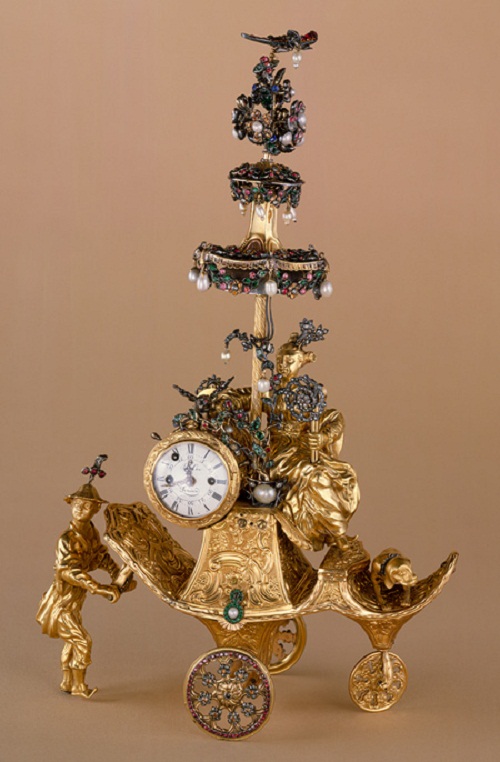
Automaton in the form of a chariot pushed by a Chinese attendant and set with a clock, 1766. Signed by James Cox
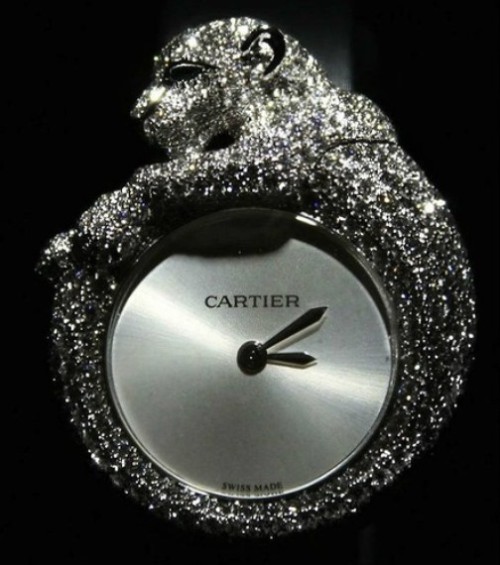
Cartier Spotted Panther has become a symbol of the art-house thanks to the director Jeanne Toussaint, whose nickname was “Panther”


